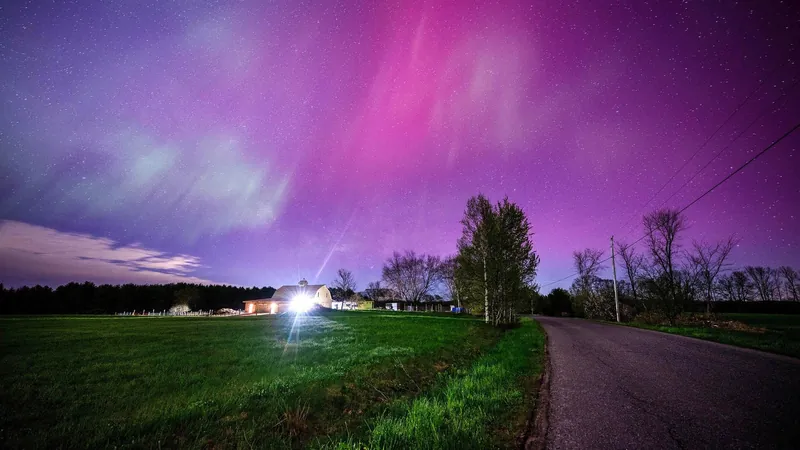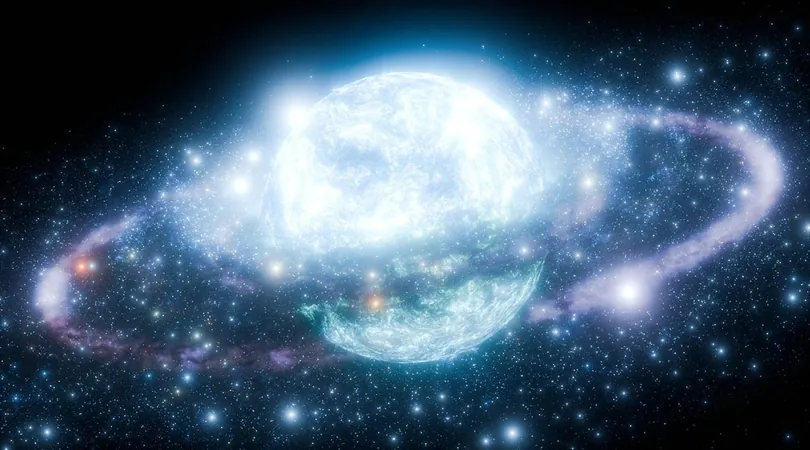
Northern Lights Forecast Update: Prepare to Be Amazed as Aurora Borealis Dazzles Tonight!
2024-11-05
Author: Emily
Exciting News!
The Northern Lights, also known as the Aurora Borealis, may be visible as far south as the Canadian border this Tuesday night! The National Oceanic and Atmospheric Administration (NOAA) has indicated that a geomagnetic storm is on the horizon, which could enhance the Northern Lights spectacle in the days to come.
Where to Catch the Best Views?
If you’re eager to experience this breathtaking natural phenomenon, your best bet will be in northern Canada and Alaska, where the chances of witnessing the auroras are exceptionally high. For those located in parts of northern Washington, Montana, North Dakota, and Minnesota, there's still hope, as the likelihood of visibility extends into these areas. States like Idaho, South Dakota, Michigan, and Maine also lie just above the visibility threshold, adding to the excitement for residents in those regions.
Expert Tips for Optimal Viewing
To maximize your Northern Lights experience, consider venturing away from urban areas to escape light pollution. A high vantage point will enhance your chances of capturing this mesmerizing display. The magical hours for viewing the auroras are primarily between 10 p.m. and 2 a.m., so plan your night accordingly!
Photographing the Spectacle
For photography enthusiasts, capturing the Northern Lights can be a thrilling venture! Icelandic tourism experts suggest switching your smartphone to night mode with a slower shutter speed for those incredible shots. If you're using a traditional camera, keep these tips in mind: set your focus to infinity, use a wide aperture, lower the shutter speed, and increase the ISO setting—this combination will help you collect as much light as possible to create stunning images.
What’s Behind This Celestial Phenomenon?
This month, solar activity has surged, marking a peak referred to as a "solar maximum." NOAA and NASA report this event leads to more sunspots and coronal mass ejections, enhancing the visibility of the Aurora Borealis for many people. This peak in solar activity is expected to persist into 2025 and early 2026, which means more spectacular light shows are on the way.
In addition to the auroras, sky-watchers have enjoyed the recent Southern Taurid meteor showers, which peaked on Sunday night. And get ready, as the Northern Taurids, active since October 13, are set to peak next week! As the year progresses, even more celestial events include the Leonids, Geminids, Ursids, and Quadrantids meteor showers. There has never been a better time to be a sky observer!
Don't miss out on this cosmic excitement — prepare your cameras and head outside for an evening beneath the stars!









 Brasil (PT)
Brasil (PT)
 Canada (EN)
Canada (EN)
 Chile (ES)
Chile (ES)
 España (ES)
España (ES)
 France (FR)
France (FR)
 Hong Kong (EN)
Hong Kong (EN)
 Italia (IT)
Italia (IT)
 日本 (JA)
日本 (JA)
 Magyarország (HU)
Magyarország (HU)
 Norge (NO)
Norge (NO)
 Polska (PL)
Polska (PL)
 Schweiz (DE)
Schweiz (DE)
 Singapore (EN)
Singapore (EN)
 Sverige (SV)
Sverige (SV)
 Suomi (FI)
Suomi (FI)
 Türkiye (TR)
Türkiye (TR)